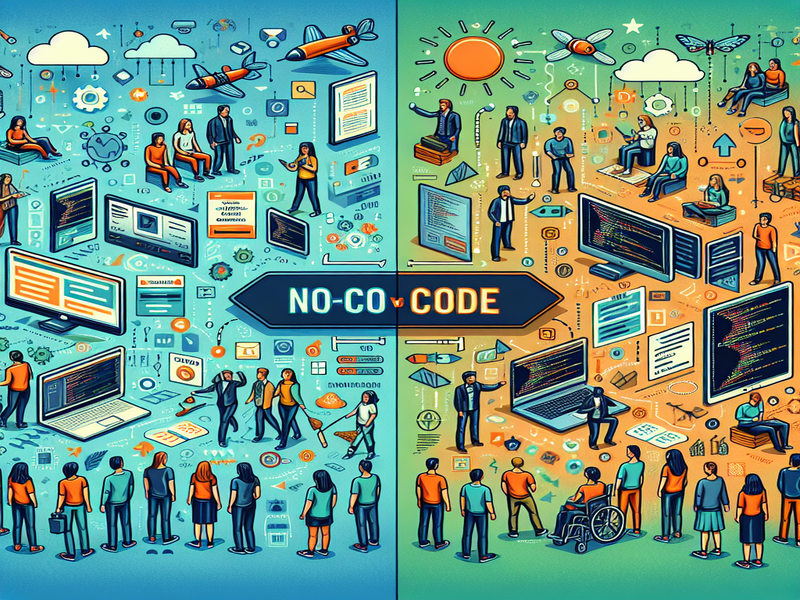- March 17, 2024
- 3 min read
Decoding the Future of Software Development: No-Code vs. Low-Code and the Role of UBOS
When it comes to rapid solution development, the debate between No-Code vs. Low-Code Development is a hot topic. Both approaches offer unique advantages and challenges, depending upon your business needs and technical expertise. However, the UBOS platform exemplifies the benefits of low-code development, harnessing the power of AI-powered solutions for seamless and efficient application creation.
Understanding No-Code and Low-Code Development
No-code and low-code development platforms are designed to expedite the application development process. They eliminate the need for extensive coding knowledge, making it easier for non-technical individuals to create and manage applications.
No-code platforms provide a completely visual interface, allowing users to build applications by dragging and dropping elements onto a canvas. On the other hand, low-code platforms require some coding knowledge but significantly reduce the amount of manual coding required.
Benefits of No-Code and Low-Code Development
The primary advantage of both no-code and low-code development is the speed of application development. With these platforms, businesses can quickly respond to market changes and customer demands, reducing the time to market for new applications.
Another significant benefit is the democratization of application development. By reducing the reliance on specialized coding skills, more people within an organization can contribute to application creation, fostering innovation and collaboration.
Challenges and Use Cases
Despite the benefits, no-code and low-code development are not without challenges. No-code platforms can limit customization options, making it difficult to create complex applications. Low-code platforms, while more flexible, still require some coding knowledge, potentially limiting their accessibility.
However, these platforms excel in specific use cases. No-code platforms are ideal for simple applications, such as internal tools or prototypes. Low-code platforms are best suited for more complex applications, where customization and scalability are crucial.
The UBOS Platform: A Low-Code Solution
The UBOS platform is a low-code solution that combines the accessibility of no-code platforms with the flexibility of low-code platforms. With UBOS, users can create powerful applications with minimal coding, leveraging AI-powered solutions for more efficient and effective development.
UBOS utilizes OpenAI’s ChatGPT and ElevenLabs AI Voice integrations, among others, to enhance its AI capabilities. These integrations allow for the creation of AI-powered chatbots, voice assistants, and more, providing a powerful toolset for enterprise innovation teams, IT consultancies, agencies, and SMB owners and operators.
Conclusion
Whether you choose a no-code or low-code development platform depends on your specific needs and resources. However, platforms like UBOS showcase the potential of low-code development, offering a flexible and powerful solution for rapid application development. By harnessing the power of AI-powered solutions, UBOS allows businesses to innovate and adapt quickly, staying ahead of the competition in today’s fast-paced digital landscape.

For more information on how UBOS can revolutionize your application development process, check out our pricing and about us page. You can also explore our templates and portfolio for inspiration and ideas.
